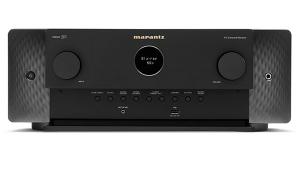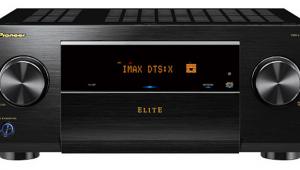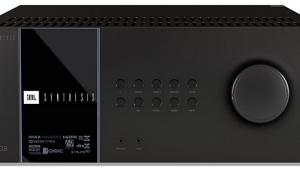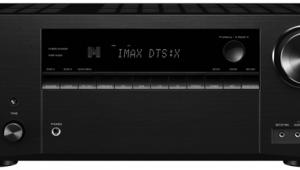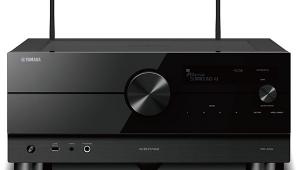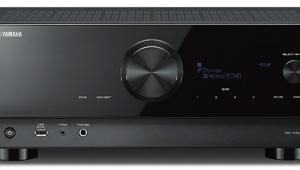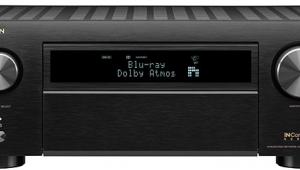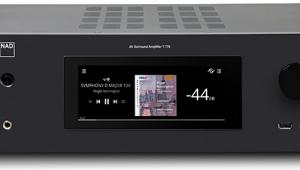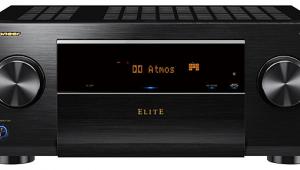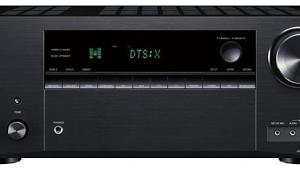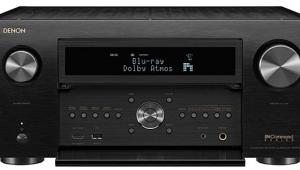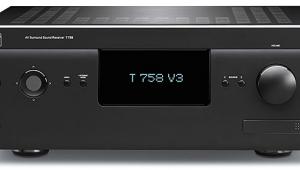Cambridge Audio Azur 551R A/V Receiver

Some of the best-sounding audio/video receivers come from companies that have earned a “low end of the high end” reputation in the two-channel sphere. And, yes, in case you were wondering, that’s a good thing. These receiver brands offer audiophile performance at what I would call moderate prices—although the owner of doghouse monoblocks would consider them cheap, while penny pinchers at the other end of the spectrum would consider them sky high. Among others, I’m referring to Arcam, Rotel, NAD—and Cambridge Audio, which just revamped its AVR line to include three new models.
Now, I know some readers will go berserk over the fact that Cambridge Audio’s entry-level Azur 551R costs $1,200 yet omits room correction, which is standard equipment in receivers that cost a fraction as much. Network audio features are also conspicuous in their absence. You’d have to move up to the forthcoming Azur 651R or Azur 751R to get Audyssey 2EQ auto setup and room correction—and that version of Audyssey doesn’t even equalize the sub channel. But this British manufacturer is more interested in the price/performance ratio than in the price/feature ratio.
Short Stature, Powerful Physique
At little more than 4 inches tall, you might mistake the Azur 551R for a low-end product, perhaps one made compact by Class D amplification. But looks deceive on both counts. What allows its rugged, all-metal chassis to be so short is what Cambridge calls X-Tract, a hybrid cooling technique. Here’s how John Bevier of Audio Plus Services (U.S. distributor for Cambridge Audio) describes it: “It’s a combination of radiated and fan cooling. The transistors are secured to a structure that has a large surface area and is tunnel shaped. Then a fan-driven convection flow is forced through the core of that tunnel. The unit has enough surface area during normal running not to need added cooling, but when you’re driving the amp hard, the whisper
fan kicks in to increase cooling efficiency.”
Impressed? I am. This design is one of the things your $1,200 is paying for. It allows the fairly large toroidal power supply and discrete Class AB amp modules to pump out power without breaking a sweat. And to help keep that power clean, the heavy amp artillery is kept separate from the digital processing and input sections.
The Azur 551R is rated at 90 watts per channel into 8 ohms in stereo, and Cambridge claims 110 watts into 6 ohms. With seven channels driven, specified power is 60 watts per channel into 8 ohms. See our measurements for the final verdict, but if this AVR lives up to its specs, it should be able to drive speakers of average or even slightly less-than-average sensitivity—including the vast majority of those marketed for home theater use—to satisfyingly high levels in modestly sized rooms. [Editor’s note: The receiver did live up to its billing and measured 118 watts x 2 into a 4-ohm load, along with making its other numbers.] And this is Cambridge’s lowest-priced receiver. The soon-to-arrive Azur 651R is expected to be rated at 95 watts times seven, and the Azur 751R at 110 watts times seven, both into 8 ohms, with considerably more power into lower impedances. By A/V receiver standards, these are good numbers. (Specs, pricing, and availability were still fluid at press time.)

With limited real estate on the back panel, the 551R has to pick and choose its connectivity options. It has four HDMI inputs and one output, all in back. While there are two component video inputs, there’s no corresponding output, which could possibly be an issue for owners of pre-HDMI high-def video displays. Like- wise, although the AVR has three composite video and—surprise—two S-video inputs, these non-HD analog connections are not complemented by outputs (not even for second- zone use). Cambridge does provide full 7.1-channel sets of analog ins and outs, so you can repurpose this receiver as a surround processor or plug in a pre-HDMI disc player.
The 551R is devoid of room correction, but it does include Cambridge Audio’s Microphone Controlled Auto Set-up (CAMCAS). So at least the newbie won’t have to fret over speaker distances and other basic settings. Some might argue that a true audiophile wouldn’t want to use room correction anyway. (In my experience, that depends as much on the quality of the room correction as on the ideology of the listener.)
Another notable omission is one of the more sophisticated low-volume listening modes: Dolby Volume, THX Loudness Plus, or Audyssey Dynamic EQ/Volume. While Cambridge includes a generic Dynamic Range Control, it applies only to Dolby Digital signals. So there is effectively no dynamic range control for lossless Blu-ray soundtracks.
The 551R has no Ethernet jack and therefore no Internet radio or other audio-streaming options. While the top-of-the-line Azur 751R has an iOS-compatible USB input, the 551R does not, so you’ll have to use one of three extra-cost docks: the iD10 ($89), iD50 ($179), or iD100 ($300)—that last one accommodates iPads as well as iPhones and iPods. This wouldn’t be so bad if AirPlay and Bluetooth weren’t also missing in action. The receiver does have a front-panel stereo analog minijack labeled “MP3 in” to patch in your smartphone, music player, or tablet of choice.
The 551R also lacks zone two capability, which is reserved for the step-up models. But it’s worth noting that if you should wander into that space, you’ll find that Cambridge has applied a unique approach it calls “follow-main,” in which it downmixes 5.1 and 7.1 signals being played in the main zone to 2.1 (with subwoofer support) for the zone-two output. Furthermore, HDMI inputs can be passed to zone two—still a rarity among AVRs.
Omissions notwithstanding, the 551R does offer flexibility to the knowledgeable user for optimizing the sound. You’ll find individual crossover settings for front, center, and surround channels to accommodate different speaker sizes within the same system. There’s also a bass augment mode that sends low-frequency signals to the sub even when the main speakers are set large (and therefore receiving a full-range signal).
Ergonomically, the AVR isn’t especially fancy but not especially complicated, either. The blue, black, and white graphic user interface is easy to navigate. The remote control consists of just 22 buttons (not much for an AVR), plus a navigation ring with a center button. While the buttons seem unduly itty- bitty, and none are backlit or even luminescent, you won’t have much trouble tuning the volume control, even in the dark. It’s built into the top and bottom of the navigation ring and is easy to find by touch.

